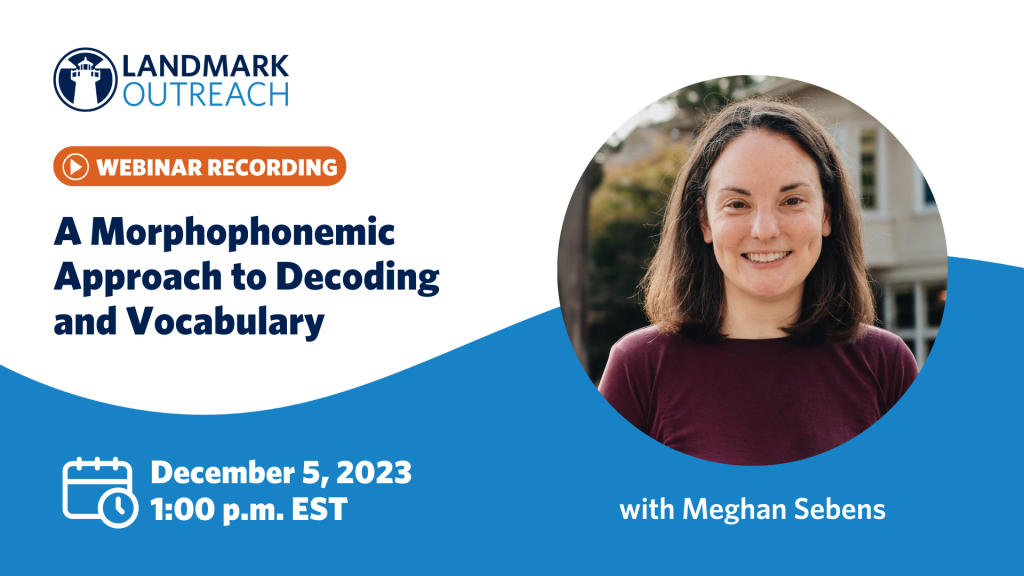As a new teacher, I learned early on that oral reading fluency meant more than speed. During a progress monitoring session, I asked a student to read a passage from Summer of My German Soldier. The student read about the POWs who came to town with accuracy and at an appropriate pace, but lacked any intonation, expression, or pausing. The student’s perceived dismissal of sentence breaks and phrase boundaries, despite the complex topic and complicated vocabulary, gave me pause, so I did something I hadn’t done before–I asked a question about the passage. The student’s inability to tell me anything about what was read unlocked for me the importance of looking at oral reading fluency as a bigger picture beyond rate and accuracy, and so began my journey into the research.
Defining Oral Reading Fluency
In 2000, the National Reading Panel identified reading fluency as one of the five critical pillars of reading development and achievement. Oral Reading Fluency (ORF) is defined as the ability to read with speed, accuracy, and proper expression. In other words, ORF is a combination of two distinct skill sets: automatic recognition of words and appropriate prosody, or expression and intonation. These skill sets are often an indicator of good comprehension and a foundational part of the bridging process between decoding and comprehension.
What is Automaticity?
As noted above, the automatic recognition of words, known as automaticity, is the first subset of fluency skills. Automaticity combines elements of word reading accuracy with the rate of recognition. In order for reading to become fluent, or effortless, readers need solidified word recognition skills that occur automatically so that cognitive energy can be devoted to comprehending the material and not pulling the words from the page.
Reading Research Quarterly published a review of research in 2010, which cites Vanderbilt University Psychology Professor, Gordon Logan’s 1990s explanation that “processes are considered to be automatic when they possess four properties: speed, effortlessness, autonomy, and lack of conscious awareness (Kuhn, et al, p.231).” Further explanation clarifies effortlessness as a sense of ease or lack of struggle. Students who have solidified sound-symbol correspondence through the process of orthographic mapping read words on the page more efficiently, which allows for decoding to feel effortless. Additionally, the more that processes for reading become ingrained in the brain, the more they occur with autonomy, or without effort or intention. As a teacher, I know that students have internalized the need to raise the pitch of their voice when reading a question mark when they no longer need to highlight the question marks and provide themselves with cues to raise their pitch. Lastly, a lack of conscious awareness highlights how successful readers can decode and comprehend without feeling each discrete step of the process take place. According to Harvard Graduate School of Education psychologist and literacy researcher Jeanne Chall (1996), “disfluent readers tend to be keenly aware of the steps they need to undertake to determine the words in a text and find the process to be slow and deliberate.” The goal, then, is to get readers to a place where they feel a sense of ease when engaging in the reading process.
This ease in reading is often measured by the number of words students can read correctly in one minute. Hasbrouck & Tindal norms outline Words Correct Per Minute (WCPM) benchmarks by grade level that are calculated through an equation of subtracting the number of errors from the total number of words read, multiplying that by 60, and then dividing by the total time it took to read the passage in seconds. However, this view of oral reading is overly reliant on accuracy and rate, but does not account for prosody or comprehension. Leading researchers such as Timothy Shanahan are asking the question, “How important is reading rate?” In attempts to define fluency with further specificity, it is suggested that fluent reading should match the rate of speech, meaning that fluent reading should sound comparable to an individual’s fluent speech. However, current research studies highlight limitations with this data, especially for students with learning disabilities who are often not specifically included in reading fluency studies. Therefore, researchers caution against using only Words Correct Per Minute goals to measure progress, especially in older grades, as they become too reliant on rate and pace, which can be impacted by additional factors. Accuracy and comprehension measures connected to an orally read text are better suited to measuring the desired outcome of successful reading.
Prosody and Comprehension
The relationship between prosody and comprehension could be considered similar to the chicken or the egg scenario, where the question is whether comprehension of the text allows for correlating prosody or whether the ability to portray accurate prosody leads to improved comprehension. Researchers know there is a statistically significant relationship, but, despite the reciprocity, the directionality has yet to be solidified.
“Aligning Theory and Assessment of Reading Fluency: Automaticity, Prosody, and Definitions of Fluency,” a research review in the Reading Research Quarterly, defines elements of prosody as follows. First, pitch, or the variation in the highness or lowness of your voice, can convey pragmatic information and usually follows punctuation. For example, a question mark indicates that your pitch should rise to signify an expected response. Next, stress is explained as “a property in speaking that makes one syllable in a word more prominent than its neighbors (Kuhn et al, 2010, p. 234).” In primary classrooms, students are often taught tricks such as calling the dog to determine which syllable is stressed in a word. Lastly, pausing can involve the appropriate pausing and phrasing within a sentence or using punctuation to dictate pausing between sentences. The adherence to these elements of syntax and prosody further supports comprehension of the text as well as oral reading fluency.
Supporting & Building Oral Reading Fluency in the Classroom
In order to support and build oral reading fluency in any classroom, students need to be provided with authentic opportunities to engage with text, along with relevant feedback. Kent State University’s director of literacy education, Timothy Rasinski, provides one framework for giving students structured feedback on oral reading progress called the Multidimensional Fluency Scale. This scale allows teachers to provide quantifiable feedback on specific elements of fluency. A great way to implement this fluency scale would be through the use of authentic repeated reading opportunities. According to Timothy Rasinski in “Why Reading Fluency Should be Hot!” (2012), “an authentic approach to deep or repeated readings involves students rehearsing a text (script, song, poem, speech, etc.) over the course of a day or several days for the purpose of eventually performing the text for an audience of listeners” (p. 520). It is most effective when combined with instructional components such as explicit phonics patterns, vocabulary, and/or comprehension knowledge or strategies, and can involve song lyrics, poems, excerpts from novels, speeches, etc. This “repetition allows for the deepening of traces and the freeing up of attention” (Kuhn et al, 2010, p.233), which supports the development of both automaticity and prosody while reading. Students become increasingly more automatic with word recognition the more they are exposed to the same text, and this automaticity then allows more cognitive energy to be devoted to making sense of what was read. Teachers can also look to incorporate opportunities for Reader’s Theater to support content knowledge development or deep reading of a novel. By using internet resources or creating a script from content or novel materials, teachers can reinforce different elements of learning through repetition with a reader’s theater.
When considering ways to reinforce oral reading fluency development in the classroom, the What Works Clearinghouse (WWC) is an excellent resource for determining what research exists on the efficacy of different programs, approaches, and instructional methods.
References
Hasbrouck and Glaser. (2018). “Reading Fluently Does Not Mean Reading Fast.” International Literacy Association. No. 9436
Kuhn, Melanie R. et al. (2010). “Aligning Theory and Assessment of Reading Fluency: Automaticity, Prosody, and Definitions of Fluency.” Reading Research Quarterly. Vol 45 (2). pp 230-251
O’Connor, Rollanda. (2017). “Reading Fluency and Students With Reading Disabilities: How Fast is Fast Enough to Promote Reading Comprehension?” Journal of Learning Disabilities 2018. Vol 5 (2). pp 124-136.
Rasinski, Timothy. (2012). “Why Reading Fluency Should Be Hot!” The Reading Teacher. Vol 68 (8). Pp.516-522
Rasinski, Timothy. (2014). “Delivering Supportive Fluency Instruction- Especially for Students Who Struggle.” Reading Today.
Schwanenflugel Paula J., et al. (2004). “Becoming a Fluent Reader: Reading Skill and Prosodic Features in the Oral Reading of Young Readers.” Journal of Educational Psychology. Vol 96 (1). pp. 119-129
Stevens, Elizabeth A. et al. (2016). “The Effects of Reading Fluency Interventions on the Reading Fluency and Reading Comprehension Performance of Elementary Students with Learning Disabilities: A Synthesis of the Research from 2001 to 2014.” Journal of Learning Disabilities. pp. 1-15.



